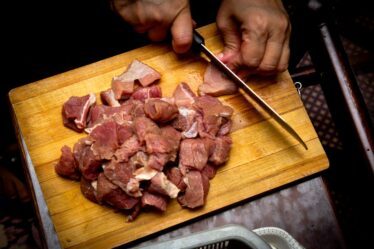
Gumbo is a beloved dish that originated in Louisiana and has become a staple in Southern cuisine. It is a hearty stew that is known for its complex flavors and rich history. In this blog post, we will explore the origins, key ingredients, types, and tips for making the perfect gumbo.
Key Takeaways
- Gumbo is a rich and flavorful dish that originated in Louisiana.
- The dish is a melting pot of cultures and flavors, with influences from African, French, and Native American cuisine.
- Key ingredients in gumbo include the holy trinity (onion, celery, and bell pepper) and roux (a mixture of flour and fat).
- There are many variations of gumbo, including seafood, chicken, and sausage.
- Tips for making the perfect gumbo include using the right cooking techniques, seasoning, and garnishing.
The origins and history of gumbo: A melting pot of cultures and flavors
Gumbo has a fascinating history that reflects the diverse cultures that have influenced Louisiana cuisine. It is believed to have originated from West African cuisine and was later influenced by French, Spanish, and Native American cultures. The word “gumbo” itself is derived from the West African word for okra, which is a key ingredient in many gumbo recipes.
Gumbo was also shaped by the availability of ingredients in Louisiana. The state’s proximity to the Gulf of Mexico meant that seafood, such as shrimp, crab, and oysters, became popular additions to gumbo. Rice, another staple ingredient in gumbo, was introduced by the Spanish settlers. The use of roux, a mixture of flour and fat, was influenced by French cooking techniques.
Understanding the key ingredients of gumbo: From the holy trinity to the roux
The holy trinity of gumbo consists of onions, celery, and bell peppers, which form the base of the dish. These aromatic vegetables provide a depth of flavor to the stew. The roux, a mixture of flour and fat, is another essential ingredient that gives gumbo its thick and creamy texture. The roux is made by cooking flour and fat together until it reaches a dark brown color.
Other key ingredients in gumbo include seafood, chicken, sausage, okra, and rice. Seafood gumbo is a popular variation that features shrimp, crab, and oysters. Chicken and sausage gumbo is another classic variation that is hearty and flavorful. Vegetarian gumbo is also an option that uses tofu or tempeh as a protein source.
Types of gumbo: From seafood to chicken and sausage, explore the different variations
| Type of Gumbo | Main Ingredients | Region of Origin |
|---|---|---|
| Seafood Gumbo | Shrimp, crab, oysters, and/or fish | Louisiana, Gulf Coast |
| Chicken and Sausage Gumbo | Chicken, sausage, and vegetables | Louisiana |
| File Gumbo | Chicken, sausage, and filé powder | Louisiana |
| Duck and Andouille Gumbo | Duck, andouille sausage, and vegetables | Louisiana |
| Vegetarian Gumbo | Okra, tomatoes, and other vegetables | Louisiana |
Gumbo comes in many different variations, each with its own unique flavors and ingredients. Seafood gumbo is a popular variation that features a combination of shrimp, crab, and oysters. The seafood is cooked in a flavorful broth along with the holy trinity and roux.
Chicken and sausage gumbo is another classic variation that is hearty and flavorful. It typically includes chicken thighs or breasts, smoked sausage, and the holy trinity. The chicken and sausage are cooked in the roux-based broth until tender and flavorful.
Vegetarian gumbo is also an option for those who prefer a meatless version. This variation typically uses tofu or tempeh as a protein source, along with a variety of vegetables such as okra, bell peppers, and tomatoes. The vegetarian gumbo is cooked in a vegetable broth with the holy trinity and roux.
Tips for making the perfect gumbo: From cooking techniques to seasoning and garnishing
Cooking gumbo requires patience and attention to detail, as it involves several steps and techniques. One important tip is to cook the roux slowly over low heat to prevent it from burning. This will ensure that the roux develops a deep, rich flavor without becoming bitter.
Seasoning is key to achieving the perfect balance of flavors in gumbo. It’s important to taste and adjust the seasoning throughout the cooking process. Adding salt, pepper, and other spices gradually will allow you to build layers of flavor.
Garnishing with green onions and parsley adds a fresh and vibrant touch to gumbo. These herbs can be sprinkled on top of the stew just before serving to add a pop of color and freshness.
How to serve gumbo: Pairing it with sides and drinks for a complete meal experience

Gumbo is typically served with rice, which helps to absorb the flavorful broth. The rice can be cooked separately and served alongside the gumbo, or it can be added directly to the stew during the cooking process.
In addition to rice, cornbread, garlic bread, or French bread are also great options for dipping into the stew. These breads can be served on the side or torn into pieces and added directly to the gumbo.
Pairing gumbo with a cold beer or a glass of red wine can enhance the flavors and create a complete meal experience. The rich and complex flavors of gumbo pair well with a variety of beverages, so feel free to experiment and find your favorite combination.
Gumbo as a comfort food: Why it’s perfect for cold days and cozy nights in
Gumbo is a comforting and warming dish that is perfect for cold days and cozy nights in. Its rich and hearty flavors make it a satisfying meal that can be enjoyed with family and friends. The aroma of gumbo simmering on the stove is enough to make anyone feel warm and cozy.
The process of making gumbo can also be a comforting experience. Taking the time to chop vegetables, stir the roux, and let the flavors meld together can be a therapeutic and relaxing activity.
Health benefits of gumbo: Nutritional value and potential health benefits of key ingredients
Gumbo contains several key ingredients that offer nutritional benefits. Seafood gumbo is a good source of omega-3 fatty acids, which can help to reduce inflammation and improve heart health. Shrimp, crab, and oysters are all rich in these healthy fats.
Okra, a common ingredient in gumbo, is high in antioxidants and can help to regulate blood sugar levels. It is also a good source of fiber, which can aid in digestion and promote feelings of fullness.
The holy trinity of gumbo, which consists of onions, celery, and bell peppers, provides a variety of vitamins and minerals. Onions are rich in vitamin C and antioxidants, while celery is a good source of vitamin K and folate. Bell peppers are high in vitamin C and vitamin A.
Gumbo beyond the pot: Creative ways to use gumbo leftovers in other dishes
Leftover gumbo can be used in a variety of creative ways. One option is to top a baked potato with gumbo for a hearty and flavorful meal. Simply heat up the gumbo and spoon it over a baked potato, then garnish with cheese, green onions, and sour cream.
Another option is to serve gumbo over grits for a Southern twist on shrimp and grits. Cook the grits according to package instructions, then spoon the gumbo over the top. Garnish with green onions and hot sauce for an extra kick.
Gumbo can also be used as a filling for empanadas or as a sauce for pasta. Simply spoon the gumbo into empanada dough or toss it with cooked pasta for a quick and easy meal.
Embrace the warmth and flavor of gumbo in your cooking repertoire
Gumbo is a versatile and delicious dish that is worth exploring in your cooking repertoire. Whether you prefer seafood, chicken, or vegetarian variations, there is a gumbo recipe for everyone to enjoy. The rich flavors and comforting nature of gumbo make it a perfect dish for cold days and cozy nights in. So why not embrace the warmth and flavor of gumbo in your own kitchen?
If you’re a fan of gumbo spice and looking for more delicious recipes to try, you’ll love this easy tuna noodle casserole recipe from Flavorful Sips. It’s a comforting and flavorful dish that combines the classic flavors of tuna and noodles with a hint of gumbo spice. The recipe is simple to follow and perfect for a quick weeknight dinner. Check out the article here to get the full details and start cooking up this tasty dish! And while you’re at it, don’t miss out on their other amazing recipes like the butternut beans recipe here or their dive into the sweetness of honeycrisp apples here. Happy cooking!



